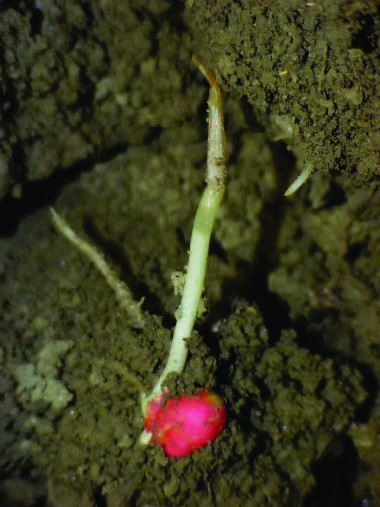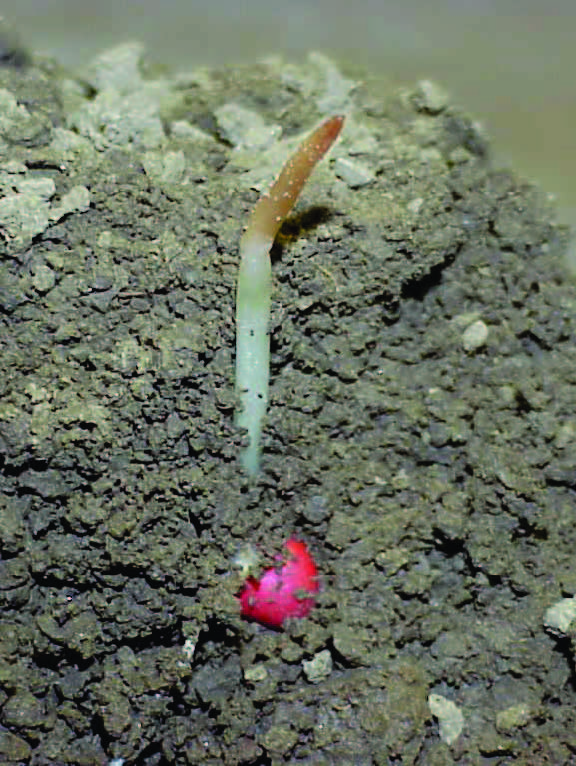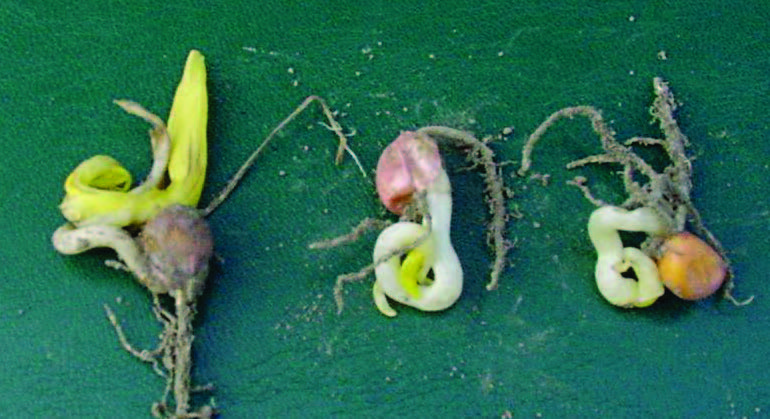Pre-Emergence Freeze Injury in Corn
Something went wrong. Please try again later...
My Account




Figure 1. Corn plant with coleoptile damaged by cold temperatures. Note the soft, brown appearance of the coleoptile tip.

Figure 2. Seedlings showing symptoms of cold injury
April 2020
Author: Mark Jeschke